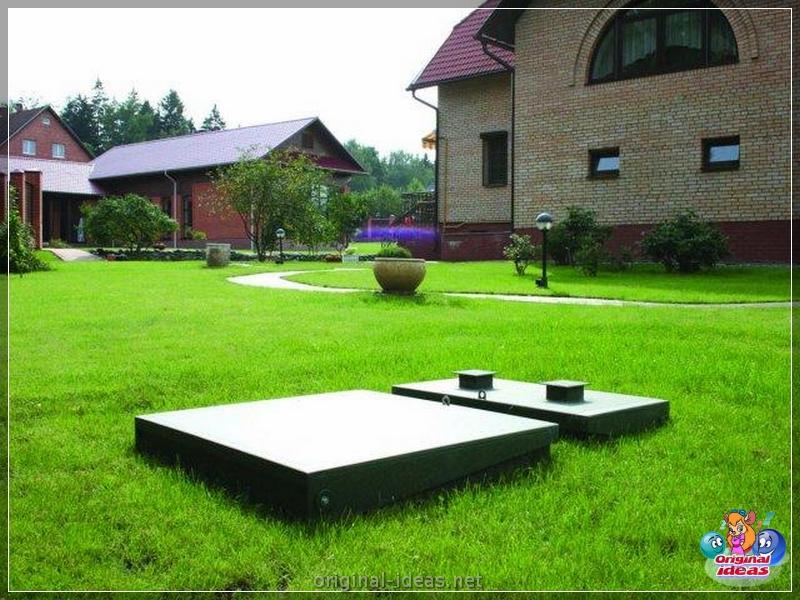
one. Installation of the septic tank traditionally begins with earthwork. It is necessary to prepare a pit. For treatment plants of low performance, you can dig a pit with a shovel, but for large septic tanks you should order an excavator. Its size depends on the dimensions of the installed structure. In any case, they should be a little more. In order to hide the septic tank underground without problems, the height of the pit is increased by 15-20 cm, and the width is 25-30 cm. The bottom and walls of the pit are aligned with a shovel using the construction level. All large stones and other inclusions located in the ground are removed. In continuation of excavation, a supply trench is created for the sewer pipe, which leaves the house, as well as a diverting trench for a similar pipe. So that the flow of contaminated water into the septic tank takes place freely, the supply pipe is put under a certain slope. For each meter they give 2 cm.
2. The bottom of the pit and trenches are covered with fine -grained sand, constantly tamping. Sand pillows should be from 15 to 20 cm high. Their evenness or slope is carefully checked. The application of the construction level will guarantee the quality of work.
3. At the bottom of the pit, a concrete plate or several blocks is lowered onto the sand pillow. This is how a rigid-resistant base for the anchorization of the septic tank is created. This action will reliably consolidate the treatment with underground, in order to prevent its surfacing during storm rains, with spring flood and other small cataclysms associated with raising the water level.
four. Anchors and cables are attached to the concrete base for the subsequent anchoring of the septic structure.

5. Installation of a septic tank in the pit is carried out using a crane-manipulator or other construction equipment. The housing of the treatment plant has special eyes for safe manipulations during installation. The septic tank is installed evenly, adhering to the sides of the workers.
7. The construction level checking the correct installation will avoid many problems. The measurement parameter is carried out by laying the level on the cover or hatch of the structure.

eight. With the help of a cable or chain, an anchor of septic tank is carried out. The case is literally tied to a concrete base. If you neglect this stage of installation work, then it is likely that with an increase in the level of groundwater, the treatment plant surfaces, or gives a roll, violating the tightness of the sewer system.
9. Sewer pipes are laid in the supply and outlet trenches. If necessary, warm in order to avoid freezing in the cold. Connection to the incoming and outgoing septic pipes using hermetic materials.

ten. Septic tank and trenches are filled with sand in layers. Every 20 cm, a thorough tamping of the next layer is made. At the same time, the treatment plant is filled with water. Thus, the pressure of the soil on the walls of the septic tank is minimized. At the same time, its tightness is checked. Sanding with sand ceases in the area of the neck of the septic structure. Further, the land is used as a backfill. Hatches are left on the surface for maintenance. Installation of the septic tank is completed.